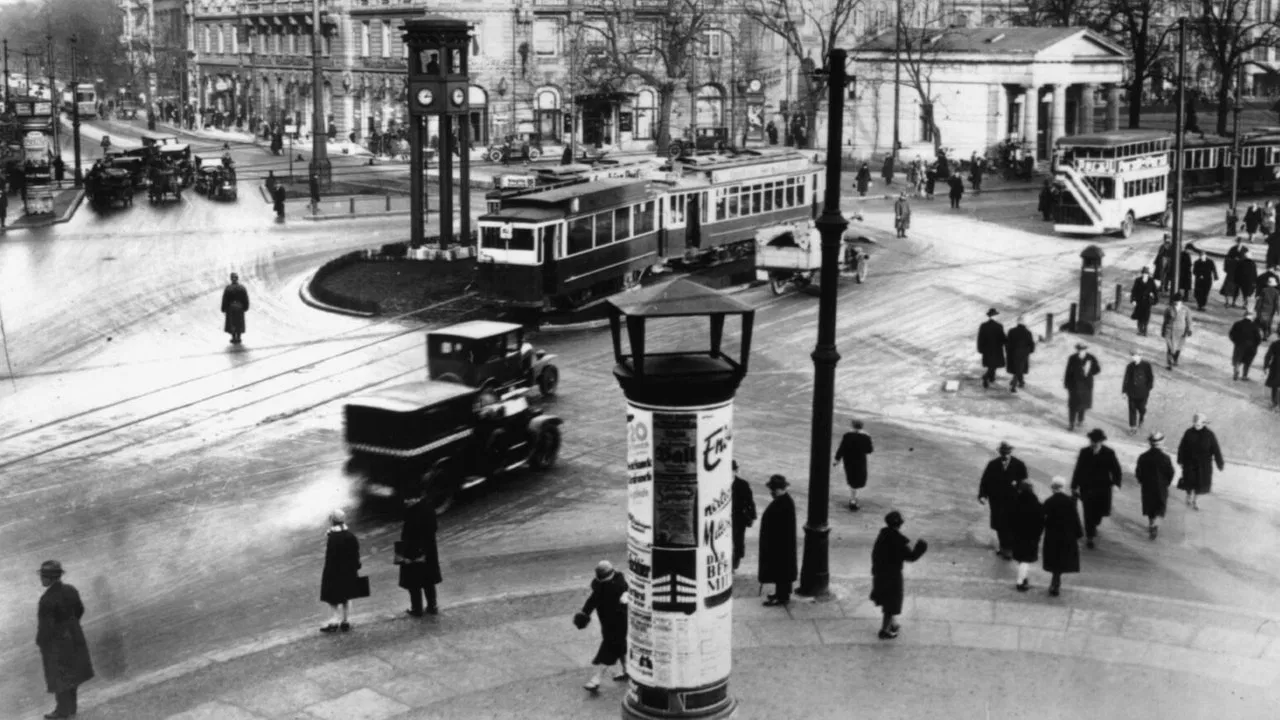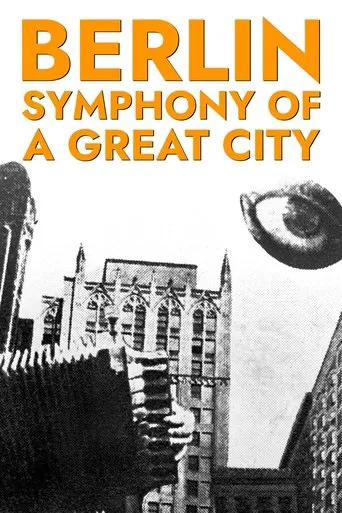

Good , But It Is Overrated By Some
... View MoreA lot of fun.
... View MoreAll of these films share one commonality, that being a kind of emotional center that humanizes a cast of monsters.
... View MoreAmazing worth wacthing. So good. Biased but well made with many good points.
... View MoreContrary to what some others have observed, I don't find this experimental film tedious at all. Certainly, it is priceless as documentation of the fabled Weimar era of this great city — a city that barely existed at all a couple of decades later. Sure, everyone points that out, but as someone who really loves Berlin, I would never minimize or take for granted in any way the importance of that. I see buildings that are long gone. And I look at the faces of these people and I always wonder what happened to them. How many of them were still alive in 1946? We'll never know.But it's even better when you try to view it with the mindset of the era in which it takes place. Film itself was still a fascinating novelty at the time and the filmmakers were still as excited as kids on Christmas morning trying to see what they could do with it. The machinery and mod cons were evidence of a revolutionary new way of life, and the Berlin lifestyle was at the vanguard. Imagine what people in some of the most backward parts of the world would have thought of this back then had they seen it.
... View MoreThis is a very straightforward and pleasant silent picture that delivers exactly what it promises. Namely: footage of Berlin, its residents, and the whole spectrum of city activities during an ordinary day in 1927. If you have any interest in seeing real life in Weimar Germany, this film is an excellent rental. It opens with an Eisensteinian-style montage sequence, as a train approaches the city. Upon its arrival in Berlin's Union Station, the city is remarkably desolate. As the film progresses, the city begins to wake up, and you are shown residents at work (mostly in factories) and leisure. You will see shopkeepers, businessmen, restauranteurs, policemen, soldiers, politicians; children at play and even some vagrants. The acts become gradually more harsh as the film progresses, with mildly unpleasant imagery beginning to creep in (e.g. shots of dogs fighting, footage of beggars, litter, an arrest, etc.), only to gracefully recede as the film reaches its closing. The final act shows Berlin's night life, which is as lavish and swinging as anything in our own "Roaring 20's." This is an impeccable time capsule and it has something to offer both film and history buffs. Berlin was truly a world city at this time, and it was extremely interesting to see everything in the Weimar's Golden period, before Hitler and the destruction that followed. Technically speaking, it is a very well made and restored film; the footage is crisp and the music was never overwhelming. This is a really easy film to appreciate and it is definitely worthwhile, particularly for history buffs. Highly recommended. ---|--- Reviews by Flak Magnet
... View Moreeine Postkarte von BerlinFriday June 15, 7:00 & 9:30 p.m., The Triple DoorBeginning with the pre-dawn ferocity of a locomotive roaring into the city, Walther Ruttmann's cinematic tone poem Berlin: Symphony of a City (1927) hurls through a day in the life of grim Weimar fortitude and resilient humanity lurking beneath the controlled chaos of mechanized modernity. Challenging himself as an art student to reach beyond traditional methods, Ruttmann sought to make his images move by literally painting on glass in his earliest films (Opus I IV). As an interpretive abstraction, Symphony of a City represents a departure from conventional documentary film-making. Ruttmann assaults his audience with an organic visualization of the city in five acts, as his camera moves through the day, into steel mills and city parks, among the wealthy and the impoverished, while children play and factories roar. Words from a newspaper fly off the screen: Murder! Marriage! Money! Money! Money! A wild eyed woman throws herself from a bridge and disappears into the dark water while office workers feverishly pound their typewriters, lovers boat on a peaceful city lake, businessmen fight in the street and nightclubs reverberate in a jazz infused alcoholic frenzy. First performed on September 23, 1927 at Berlin's Tauentzien-Palast with a score written and conducted by Edmund Meisel, Symphony of a City, was a kinetic alliance of music and images. As a theatrical experience, the unfathomable depth of subject matter and brilliance of editing fully retain the cacophonic impact of Ruttmann's intimate and unsettling urban postcard.
... View MoreClassic and splendid film that is still fascinating to watch. Walter Ruttmann did not make a documentary about Berlin, although 75 after date it certainly can be considered a document about a Berlin that is no more, he composed a film that tries to catch the essence of the atmosphere of a big city. The film is a good example of the art style Neue Sachlichkeit (functionalism): it is a cross-section of Berlin's life in which every element is equally important, shown without comment and in its totality it is the expression of the joy of Berlin's life. It is not a film about the life of Berliners, it is Berlin seen as a living mechanism.The subtitle referring to Großstadt (big city) is the key, it could have been any other city. The idea as such is not the makers' prerogative. Elsewhere the fascination with the hustle and bustle of the big city was also present as was the idea to catch this on this film and in music: e.g. Cavalcanti in France made a film about Paris and the US Ferde Grofé composed his musical suite Metropolis (1927) with New York in his mind. The irony of all these endeavours is that the film or music is abstract, but that the result is a romanticizing view.Ruttmann made several abstract film and he refers to them in the beginning with abstract horizontal lines dissolving to rail way tracks. In my view the rest of the film is also abstract. Although we see real people and situations the brilliant editing constantly keeps the film abstract: the situation and the people in a shot are not important, important is the juxtaposition to other shots: is the composition varied enough?. Thus we see a filmic composition (in stead of a musical one) and the subtitle Symphony is just. As with every composition the theme has to be modulated to keep it interesting and it is here where the weakness of the film is. The building up from the start and elaboration up to the beginning of the afternoon is splendid, precise and exiting; but from that point it bogs down for a while: we see another shop, another street etc. without adding much to what already was. It may be that Ruttmann was aware of this, note how quickly he finishes the afternoon to continue with the night-life and then immediately all the excitement and filmic fun is back.In an 1939 interview cameraman Karl Freund said that everything possible was filmed using only candid cameras. I have my doubts. Let's take for example the sequence of the drowning lady: how could he make an extreme close-up with a hidden camera in such a brilliant angle? (By the way: if she really tried to commit suicide, was Freund himself not only one of the gaping bystanders without doing anything to save her?) How could he foresee the right angle to film the prostitute picking up her client near the cornered shop window? Not that it matters for the quality of the film, but it proofs the old adagium: filming is deceiving.
... View More